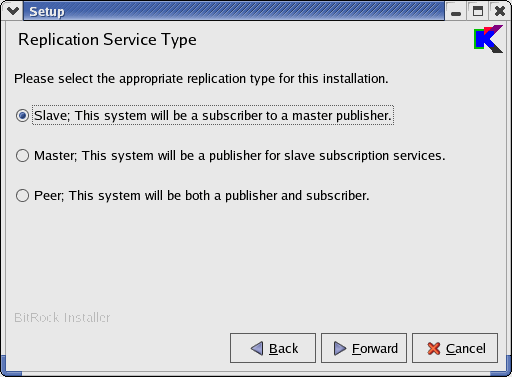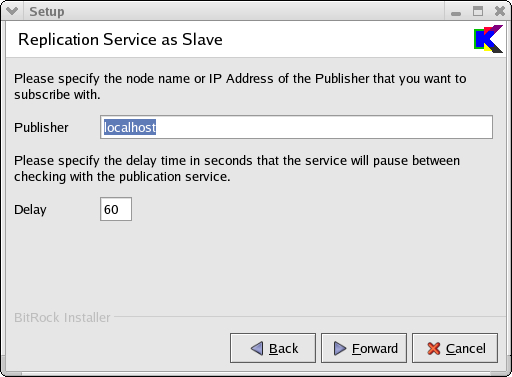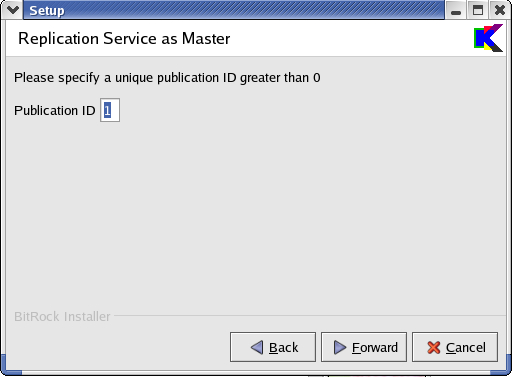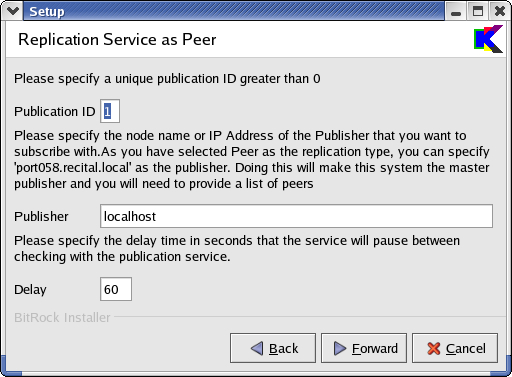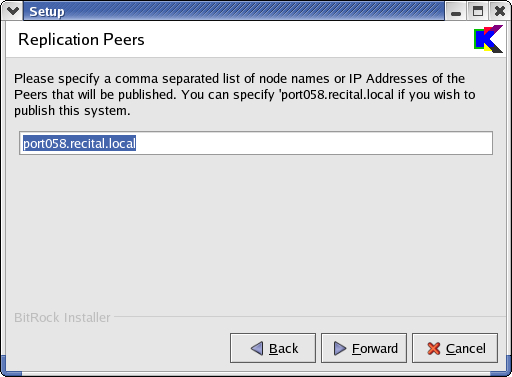Difference between revisions of "Recital Replication Graphical Installation"
Peterkelly (Talk | contribs) |
Peterkelly (Talk | contribs) (→Configuration files) |
||
| Line 104: | Line 104: | ||
|} | |} | ||
<br> | <br> | ||
| − | |||
=== DB_REPLOG === | === DB_REPLOG === | ||
Revision as of 11:06, 1 November 2009
Contents
Replication Type
The first thing you must specify is what type of Replication Service you will be running on each server. You may install the same types on different servers depending of which type of replication service you are configuring, MSR or PPR.
- Slave - Select this type if this system will be a slave subscriber in a MSR configuration. There can be many slave subscribers but updates will only be performed from data published by the replication service.
- Master - Select this type if this system will be the master publisher in a MSR configuration. There can be only one master publisher and only updates on this system will be published for replication.
- Peer - Select this type if you are setting up a PPR configuration. In a PPR configuration all systems must be set to this type. This system will be able to publish all updates and subscribe to published updates from other systems.
Slave
Publisher
Specify the node name or IP Address of the Publisher that this slave will subscribe to. This should be the system that the Master replication service was installed on.
Delay
Specify the delay time in seconds that the service will pause between checking with the publication service.
Master
Publication ID
The publication ID is a unique number that is used to differentiate each system in the replication service. For a master publisher it should be set to a value of 1. This ID should not be changed once the replication service has been started on the system.
Peer
Publication ID
The publication ID is a unique number that is used to differentiate each system in the replication service. The value must be set to a value greater than 1 and must not be the same as any other publication ID. This ID should not be changed once the replication service has been started on the system.
Publisher
Specify the node name or IP Address of the Publisher that you want to subscribe with. You can specify the node name or IP Address of the system you are currently installing on. Doing this will make this system the master publisher and you will need to provide a list of peers.
Delay
Specify the delay time in seconds that the service will pause between checking with the publication service. If you have specified this system as the publisher, then it will also be used by the publication service.
Replication Peers
This option will be displayed if you have specified that this system will also be the publisher. Please specify a comma separated list of the node names or IP Addresses of the Peers that will be published. You can specify the system you are installing on if you wish to publish it.
Modifying installed values
You can modify the values configured during installation by the following ways;
dbinstall rrs
Executing this command at the operating system prompt will allow you to reconfigure the replication service.
Configuration files
You can edit the configuration files and change the values manually. The following table contains all the variables defined during the installation process. The configuration file are stored in the conf directory which is in the root recital installation directory.
| Variable Name | Default Value | Configuration File |
|---|---|---|
| DB_PUBLICATIONID | 0 | recital.conf |
| DB_REPDIR | replication | recital.conf |
| DB_REPLOG | TRUE | recital.conf |
| DB_REPTYPE | slave | recital.conf |
| DB_PUBLISHER | localhost | recital.conf |
| DB_REPDELAY | 60 | recital.conf |
| DB_PEERS | localhost | recital.conf |
DB_REPLOG
The variable DB_REPLOG is used to enable or disable logging on the replication services. A value of TRUE will enable logging and a value of FALSE will disable logging. By default log files will be stored in the log and/or debug directory located under to root recital installation directory.
Replication Database
During the installation process a database called replication will be created. A table called queue will also be created in the replication database. If this system is the master publisher in a peer to peer configuration additional tables describe below will be created.
| Table Name | Replication Type | Service |
|---|---|---|
| queue | All | All |
| subscribers | Master Slave | Publisher |
| peers | Peer to Peer | Master publisher |
| pub_queue | Peer to Peer | Master publisher |
| conflict_queue | Peer to Peer | Master publisher |
